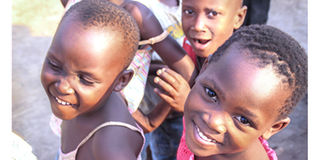Are Kenya’s budgets working for her children? A DAC 2025 reflection
Sponsored by Girl Child Network

By Patrick Kibe
Each year on June 16, Africa commemorates the Day of the African Child (DAC), honouring the lives of children who marched for their rights during the 1976 Soweto Uprising. To date, the march continues, not just for freedom, but for equity, safety, and dignity for every African child.
This year’s DAC theme, “Planning and Budgeting for Children’s Rights: Progress Since 2010”, is a timely call to interrogate whether public resources in Kenya are truly working for children. And while Kenya has made notable progress, gaps in implementation continue to threaten that progress.
Policy progress, implementation gaps
Kenya’s policy and legal framework for children is strong. The Basic Education Act (2013) guarantees free and compulsory education, while the Children Act (2022) boldly proposes a Child Welfare Fund to support social protection and alternative care.
Education leads in the national budget priorities, with Ksh702.7 billion allocated for 2025-2026.
Devolution has further played a pivotal role in advancing children’s rights at the county level. With counties now responsible for Early Childhood Development and Education (ECDE) and primary healthcare, we’ve seen encouraging progress. Many counties have invested in the construction of ECDE centres, hired teachers on permanent terms, and expanded access to child-friendly health services by establishing new hospitals and dispensaries.
Yet implementation remains the weakest link.
Many marginalised children still walk long distances to school, face understaffed classrooms, and learn in poorly equipped facilities. School feeding programmes, vital for enrolment and retention, are underfunded; with the 2025-2026 allocation reduced to Ksh3 billion, down from Ksh5.3 billion last year. This sharp cut threatens food security and school attendance among vulnerable learners.
Meanwhile, although public primary education is officially free, hidden levies continue to burden families, particularly in arid and semi-arid lands (ASALs) and informal settlements. A High Court’s landmark ruling on June 12, 2025 declaring such levies illegal is a highly welcome development. If fully enforced, it could significantly expand access to education in communities where cost remains a barrier.
When budgets bypass children
A child-responsive budget is not just a line item. It is a statement of national priorities. Yet in Kenya, children’s social protection funding lags. The 2025-2026 budget allocates Ksh 25.1 billion for older persons under the Inua Jamii programme, nearly three times more than for children (Ksh8.9 billion), despite children forming over 40 percent of the population.
In the health sector, persistent shortages of vaccines, paediatric specialists, and rural health facilities continue to undermine child well-being. The disconnect between ambitious budget allocations and actual service delivery is most evident in arid and semi-arid areas such as in Turkana County, where the Girl Child Network and Aidlink are implementing a five-year project named Let Children Learn, to improve access to inclusive, equitable, and quality primary education. However, the impact of these efforts is often undermined by systemic challenges, including poor healthcare, water shortages, and inconsistent school feeding programmes, which lead to increased absenteeism and school dropout among vulnerable children.
Include children, fund their future
Transformative change begins when we put children at the centre of decision-making. It starts with listening to children, especially those in vulnerable communities. They must be meaningfully included in budget planning processes that shape their lives. Their voices are not optional. They are essential. Transparent and accountable budget tracking must follow, ensuring that every shilling allocated for children truly reaches them.
Commemorating the Day of the African Child is not about symbolism. It is about holding ourselves accountable as duty bearers, citizens, and practitioners. Kenya has the frameworks. Now it must fund them with equity, urgency, and integrity.
____________________
Patrick Kibe is the Project Coordinator at Girl Child Network